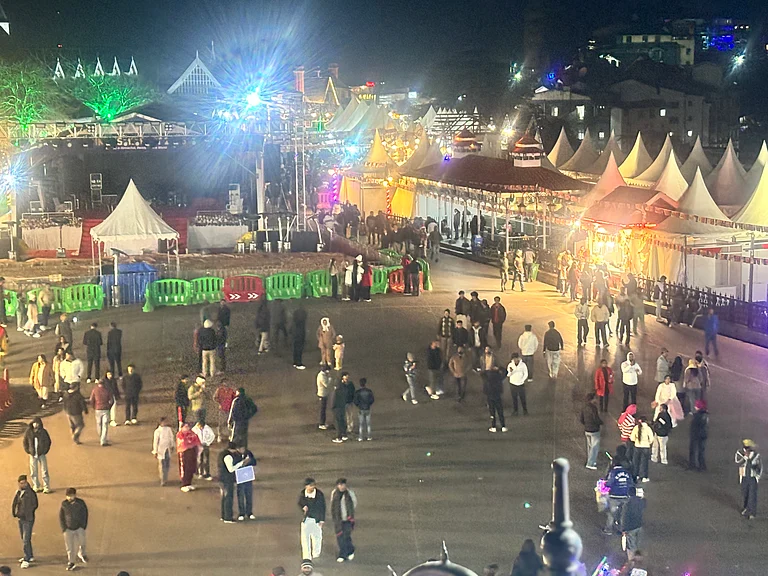It felt as if I had entered a movie scene with City of Stars by Justin Hurwitz playing softly in the background. The sun had already waved goodbye but the sky continued to rejoice in its blazing colours for a while. It was my first evening in Mahabaleshwar in Maharashtra, and I was already cherishing every moment.
After spending months in lockdown, and viewing the same cityscape from my balcony in Navi Mumbai, the trip to the hills felt like a wish fulfilled. Whether it was driving through the lush green forests of Raigad or watching the Sahyadris inching closer with every hour, the road trip to Mahabaleshwar via Lonavala rightly set the 'explorer mood'. I took my favorite companion out – camera.
The last time I had travelled to Mahabaleshwar was when I was a small kid, unaware of the magnificence of mountains. This time I opened my heart to the place and let it surprise me. And surprise me it did. A typical touristy destination that many Mumbaikars usually remove from their list of must-visit places, was winning my heart, especially with its beautiful evenings.
Before I tell you about the evenings, I would like to tell you about a concept that the photographer in me recently got introduced to. It is called the blue hour. It often lasts a few minutes during dawn and dusk, when the colour dark blue permeates the entire sky and allows the city lights to glitter in its mystical backdrop before it completely fades out in the night sky (or in the golden light, depending on the time of the day one is observing it).
Upon reaching the hill station with my family, we left for a quick drive to Sunset Point, hoping to catch a glimpse of the setting sun. However, on our way, we found a board pointing towards a narrow lane with ‘Wilson Point’ written on it. Everyone knows that Mahabaleshwar is recognised for its British influence as much as it is for its strawberries. Almost every tourist point is named after a British officer who either liked hunting in the region or had a tragic experience on one of its cliffs.
With very few cars driving up the lane, we decided to see what this deserted point had to offer. Upon reaching the top, the view opened up to a vast landscape. Only a few tiny house-like structures with network towers and a silhouette of factory chimneys at a distance filled up the scene. But that was not the reason why it did not enjoy throngs of tourist like other points. Rather, it was our timing that was a bit off because Wilson Point (named after Sir Leslie Wilson, who was the Governor of Bombay) is recognised as an ideal spot for cherishing sunrise, and not sunset. Nevertheless, it passes for an awesome place to chase the blue hour, so no regrets.
“A perfect minimalistic view," I thought to myself. The next moment I was running to the edge of the highest cliff to capture the minimalistic frame that was unfolding amidst the blue hour. After struggling with a few camera settings, I got photos that marked my first encounter with the mystic blue hour. Best enjoyed during evenings, from above a cliff or at the shore, the hour requires one to be at the right place at the right time.
Coincidently, I happened to find myself in the middle of the scene with a small crowd of people posing for pictures around, a car passing with its headlights on (reminding me of a cinematic film made at some time), a young girl riding on a white horse (magically complementing to the dreamy view), a glowing crescent moon owning a little space of own in the sky and the nestled city beginning to illuminate under the starry sky.
In the next few days of my stay, we visited other cliff points around Mahabaleshwar. From capturing an unreal landscape at Kate’s point to framing the unending Sahyadri ranges at Arthur’s seat, I explored my way through more photogenic spots in the region.
The other two popular points we covered were Tapola and Pratapgadh Fort, both located at a 20 km distance from Mahabaleshwar. While Tapola greeted us with an enthralling boat ride across River Koyna and its backwaters, Pratapgadh, on the other hand, offered us a peek into the local history with a panoramic view of the entire Satara valley.

























